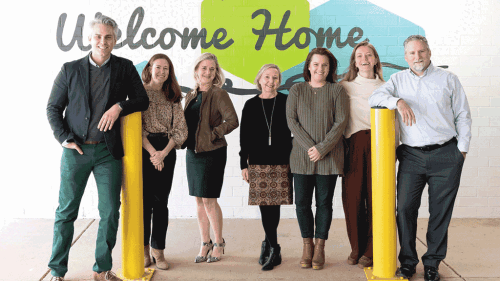Noted urbanist and author Richard Florida opened the recent 2016 ULI Florida Summit in Miami by reminding the audience that the creative class and the industries in which it works are the single most important economic drivers in the 21st-century economy. Economic development at the local and state levels can no longer be about enticing companies through special tax breaks or incentives, but about being irresistible to creative, talented people and building neighborhoods where they can simultaneously live, work, dine, drink, play, and experience a high level of interaction with each other. The creative types will be the ones to lure the companies in—or, better yet, start companies of their own, in Florida’s view.
Naturally, some cities—moreover, specific neighborhoods—are better than others at attracting the creative class, mainly by being highly compact, transit-oriented, and walkable, according to a recent study undertaken by Florida and his colleagues at the Martin Prosperity Institute at University of Toronto’s Rotman School of Management. Using 2013 data from Thomson Reuters, they examined the zip codes across the United States that received the most venture capital dollars and the characteristics of these neighborhoods—whether they were urban or suburban, how dense they were, and the percentage of people who walked, biked, or took transit to work.
They found that $20 billion in venture capital investment was flowing to just three metropolitan areas: the San Francisco Bay area, New York, and the Boston/Cambridge metro area. Between 50 and 80 percent of the venture capital in these metro areas was going to urban versus suburban zip codes; more than 25 percent of venture capital was concentrated in areas where more than 50 percent of workers walked, biked, and accessed public transit to work. Two neighborhoods in particular—South of Market and Rincon Hill, both in San Francisco—received more than $1 billion each in venture capital, and in each, more than 60 percent of workers walk, bike, or ride transit to their jobs.
Yet another study conducted by Florida and colleagues showed how talent aggregates in just a handful of regions: the top 50 metro areas in the United States drew 97 percent of venture capital investment, and these metro areas not only had more high-tech, science, and innovation industry workers, but also were more open, tolerant, and diverse.
Florida’s research led him to the conclusion that the world is not “flat” as New York Times columnist Thomas L. Friedman described it—a globalized economy of call centers, outsourcing, and Skype videoconferencing where “place is no longer important and geography doesn’t matter” for economic growth, Florida said. Rather, the world has become “spiky,” in Florida’s words, with concentrations of talent, wealth, and investment in specific geographic clusters, suggesting that place and geography matter now more than ever before.
“The creative class is not spread evenly across the economy,” Florida said. “The creative class is clustered and concentrated in large cities and metropoles. . . . In the urban districts and upscale suburban districts, the creative class [represents] 60, 70, even 80 percent of the workforce.”
So, who makes up the creative class—a term Florida put into general circulation with the 2002 publication of his book, The Rise of the Creative Class—and how big is it?
Between 1980 and 2016, the U.S. economy added more than 25 million jobs in creative fields, according to Florida, who goes beyond what one may think of as typical “creative” industries, like arts, culture, and entertainment. Creatives include people in media, communications, and design; real estate development, planning, and architecture; high-tech industries like software design, development, and engineering; professional and financial services like law, banking, and e-commerce; and biotechnology, medical devices, and other STEM-related fields. The creative class creates $2 trillion in wages and salaries and accounts for 75 percent of domestic purchasing power, Florida said.
And, of greater importance, by their very presence, members of the creative class are deciding the fates of cities and regions by demanding “a quality of life and a quality of place that people want to be near,” Florida said. So, it will not be specific companies or industries that make or break cities, but rather a talented, mobile workforce that will stay or vote with their feet.
The ideas of the creative class will spark yet more innovations, which will fuel new companies, new jobs, and new pathways for economic growth and individual opportunity. “There is something about artistic creativity that signals an open-minded community, a community that is open to new thinking and new ideas that prime the pump of entrepreneurship,” Florida said.
Archana Pyati is a writer on ULI’s strategic communications team.





